Hokkaido Travel Guide: Top Places to Go by Season and Region

Plan your perfect Hokkaido trip with our 2026 guide. From Niseko’s powder snow and the Sapporo Snow Festival to fresh seafood and lavender fields, discover the best things to do, eat, and see.
Hokkaido: Enjoy the Great Outdoors, Skiing, and Cuisine

Photo by Pixta
Hokkaido is known for its magnificent landscapes of pure nature, ski resorts with powder snow, and the freshest local seafood and vegetables.
Located at the northernmost point of Japan, this region enjoys gentle breezes in the summer and beautiful snowscapes in the winter. Hokkaido attracts visitors from both within and outside of Japan throughout the year.
To enjoy Hokkaido to the fullest, this article features everything you need to know about this region: 40 great places to visit, exciting things to do in Hokkaido, and information on local food specialties.
Hokkaido Travel Guide
1. Hokkaido Area Guide: 4 Major Areas
2. Sapporo, Jozankei Onsen, and Otaru: 15 Places to Visit
3. Noboribetsu: 3 Great Places to Visit
4. Hakodate: 10 Places to Visit
5. Niseko: Famous Powder Snow Ski Resorts
6. Asahikawa, Furano, and Biei: 6 Places to Visit
7. Akan and Lake Mashu: 2 Amazing Places to Visit
8. Shiretoko, Tokachi, and Obihiro: 4 Places to Visit
9. Hokkaido's Food Scene
10. Hokkaido Events and Festivals
11. Cherry Blossoms and Fall Foliage: Seasonal Features and Weather
12. Transportation, Hotels, and WiFi in Hokkaido
Hokkaido Area Guide: 4 Major Areas
Hokkaido can be divided into four main areas.
1. Central Hokkaido (Sapporo, Jozankei Onsen, Noboribetsu, etc.)
This area includes the capital city of Hokkaido, Sapporo, famous for its annual snow festival, the hot spring resorts of Jozankei and Noboribetsu, as well as the beautiful city of Otaru with its beautiful canals and rivers.
2. Southern Hokkaido (Hakodate, Niseko, etc.)
Hakodate, which is famous for its splendid night view of the city, the nature-rich Onuma Park, and Niseko, an area famous for ski resorts with fine powder snow, are all found in southern Hokkaido.
3. Northern Hokkaido (Asahikawa, Furano, Biei, etc.)
Asahikawa with its famous zoo, Furano, famed for its lavender gardens, and Biei, where the Blue Pond is located, are in this region. Visitors can enjoy magnificent views of nature here.
4.Eastern Hokkaido (Akan, Obihiro, Tokachi, Shiretoko, etc.)
This area includes Kushiro and the Akan-Mashu National Park, Shiretoko, a nature-rich area designated as a UNESCO world heritage, as well as Obihiro and Tokachi where the country's largest ranch areas are located. It is known for its colorful gardens and high-quality hot springs.
40 Must-Visit Destinations in Hokkaido by Region
We will introduce the best places to visit in central, southern, northern, and eastern Hokkaido.
Sapporo, Jozankei Onsen, and Otaru: 15 Places to Visit
1. Sapporo Clock Tower

The Sapporo Clock Tower has been designated a National Important Cultural Property. It's a Western style building with a characteristic red roof and white walls. Documents related to the development of the Sapporo area are on display within the building.
Hotels near Sapporo Clock Tower
2. Hitsujigaoka Observation Hill

Hitsujigaoka Observation Hill offers a view over the city of Sapporo. On the spacious fields are flocks of sheep and a statue of William Smith Clark, who contributed to the farming education in Sapporo and left the saying, "Boys, be ambitious." We recommend visiting to take a photo with Mr. Clark and imitating his pose.
3. Hokkaido University

Hokkaido University has beautiful golden ginkgo trees as well as a farm that was established as a result of a proposal by Professor Clark. Part of the campus is open to the public to visit for free.
Volunteer students organize free walking tours through the Hokkaido University campus for visitors who wish to learn about the city's rich history. The Hokkaido University Museum, a facility dedicated to natural sciences, can also be visited for free.
Hotels near Hokkaido University
4. Former Hokkaido Government Office

The Former Hokkaido Government Office is also known as the Red Brick Government Building. True to its name, its outer walls consist of classic red bricks. It has an elegant American-style Neo-Baroque design and is open to the public free of charge.
Hotels near Hokkaido Government Red Brick Government Building (Former Main Go...
5. Nijo Market

Nijo Market is a well known hub for fresh food and seafood from all over Hokkaido, and is a market that has a history of over 100 years. Here, you'll be able to find seafood like Hokkaido’s famous crab and salmon roe, as well as some traditional bar districts and alleys of old Sapporo.
6. Sapporo Shiryokan (Sapporo Archives)

The Sapporo Shiryokan (The Former Sapporo Court of Appeals) offers hands-on experiences of pressing flowers and paper cutouts, as well as music concerts. The building was built in 1926 and is loved by the locals as a historical and cultural museum.
Hotels near Sapporo Archives Museum (Former Sapporo Court of Appeals)
7. Sapporo Beer Museum

There is one stop all beer enthusiasts should visit in Hokkaido: the Sapporo Beer Museum (Sapporo Biiru Hakubutsukan). Beer lovers can learn the fascinating background behind the history of Japan’s famous beer by either taking the paid premium guided tour or take your time through the museum with the free tour. Either way you can visit the base floor where you can do some beer tasting and compare the different beers they produce.
Hotels near Sapporo Beer Museum
8. Mt. Moiwa Ropeway

The spectacular view of Sapporo from atop Mt. Moiwa, up531 meters is something you don't want to miss during your visit here. You can reach the summit by ropeway to find the “restaurant in the sky” with a 270-degree glass wall providing the breathtaking scenery of the area. Enjoy a meal at restaurant in the sky as it stands quietly and shines atop the mountain.
Hotels near Sapporo Mount Moiwa Ropeway
9. Shiroi Koibito Park

Shiroi Koibito is the name of a chocolate snack and famous Sapporo souvenir. At Shiroi Koibito Park, not only can you watch the production process of the popular sweet snack, but you can also experience making it yourself!
10. Moerenuma Park

Moerenuma Park, designed by famous architect Isamu Noguchi, is a huge park where nature meets art. We recommend stopping by the beautiful park to see the different views it offers through the seasons.
11. Sapporo Art Park: An Outdoor Art Museum!

The Sapporo Art Park (Sapporo Geijutsu no Mori) has 74 sculptures sculpted by 64 artists on display. These sculptures placed in the nature-rich forest show a different side of its artistic nature throughout the year, depending on the weather and the season that you’re viewing the art pieces in.
12. Historical Village of Hokkaido (Hokkaido Kaitaku No Mura)

The Historical Village of Hokkaido (Hokkaido Kaitaku no Mura) was established as a memorial of 100 years of Hokkaido. Here, visitors can be enlightened about the history and development of Hokkaido by seeing the historical buildings and documents. You can also enjoy the village's famous potato and glutinous rice cakes and Hokkaido's delicious miso ramen at the facility's cafeteria.
13. Horomitoge Lavender Garden

Horomitoge Lavender Garden boasts 5,000 beautiful lavender flowers. The best season to visit this garden is from mid-July to mid-August. Visitors can also enjoy picking lavenders at the facility. You'll be able to enjoy some quality time with your family and loved ones here, surrounded by the pleasant scent of lavender.
Hotels near Horomitoge Lavender Garden (Yume Kobou Sato)
14. Jozankei Onsen: Magnificent Fall Foliage and Hot Springs

Jozankei Onsen is known for its hot springs surrounded by a beautiful autumn landscape. You can stroll along the stream from the hot spring town, ride a gondola to enjoy the autumn leaves, or hop on the Koyo Kappa Bus, which will take you around to the major autumn foliage viewing spots.
Hotels near Jozankei Onsen
Book a hotel room in Sapporo or Jozankei Onsen on Booking.com
Book a hotel room in Sapporo or Jozankei Onsen on Agoda
15. Otaru Canal

Otaru Canal, a canal formerly used to transport goods in the 20th century runs through the city Otaru, Hokkaido. After becoming obsolete with modern docks, the restored canal is known especially for providing historically unique scenery. The brick buildings that line the side of the canal, along with the warm light emitted from the gas lamps which shine upon the townscape create a dreamy atmosphere at night.
Hotels near Otaru Canal
Book a hotel room in Otaru on Booking.com
Book a hotel room in Otaru on Agoda

Noboribetsu: 3 Great Places to Visit
16. Noboribetsu Onsen

Noboribetsu Onsen is Hokkaido’s best and most famous onsen hot spring resort. The Jigokudani crater provides the hot spring waters, creating multiple varieties of thermal water with minerals to relax and revitalize your body!
Hotels near Noboribetsu Onsen
17. Noboribetsu Bear Park (Kuma Bokujo)

Just a 7-minute ropeway ride away from the Noboribetsu Onsen hot spring town you’ll findssNoboribetsu Bear Park. Located on “Bear Mountain” this park is home to many Hokkaido native brown bears that you can enjoy up close, safely behind glass panes of course. This interactive area is called the “Human Cage,” and may leave you wondering who’s really the one being exhibited here.
Hotels near Noboribetsu Bear Park
18. Noboribetsu Date Jidai Village: A History-Themed Amusement Park!

Noboribetsu Date Jidaimura is an amusement park themed after Japan’s Eod period and is a facility consisting of ninja houses, samurai residences, and several other historically themed attractions that’ll make you feel like you’re in another era. Once you've finished exploring the great outdoors of Hokkaido, how about having some fun in this world of ninjas and geisha?
Book a hotel room in Noboribetsu on Booking.com
Book a hotel room in Noboribetsu on Agoda
Hakodate: 10 Places to Visit
19. Mount Hakodate

Mount Hakodate is an iconic sightseeing location known for being one of Japan's Top Three Night Views. The view over Hakodate in the evening seen from the ropeway is breathtakingly beautiful.
To reach the summit of Mount Hakodate, take the Hakodateyama Ropeway from the city's Motomachi district. The summit can also be reached by car between the months of April and November. You can take a bus from Hakodate Station which will take you directly to the summit. Please be aware that the buses to Mount Hakodate operate mainly in the evening. During the autumn seasons the buses also run less frequently.
Hotels near Mount Hakodate
20. Goryokaku Tower

The Goryokaku Tower offers a view of the Goryokaku, the star-shaped citadel, which was built back in 1864 by the Edo shogunate. You will be amazed by the beautiful western architectural techniques used in the Goryokaku when seen from the observatory.
The tower is 107 meters high and offers a magnificent view of the city. Visitors can learn about the history of Hakodate with the displays of figurines that illustrate the battles that were fought in the Goryokaku area at the end of the Edo Period (1603-1868).
On the lower deck of the observatory, located 86 meters above ground, you will find a cafe and a souvenir shop. The second deck, located 90 meters above ground, is a small museum showcasing the tower's history.
Hotels near Goryokaku Tower
21. Onuma Quasi-National Park
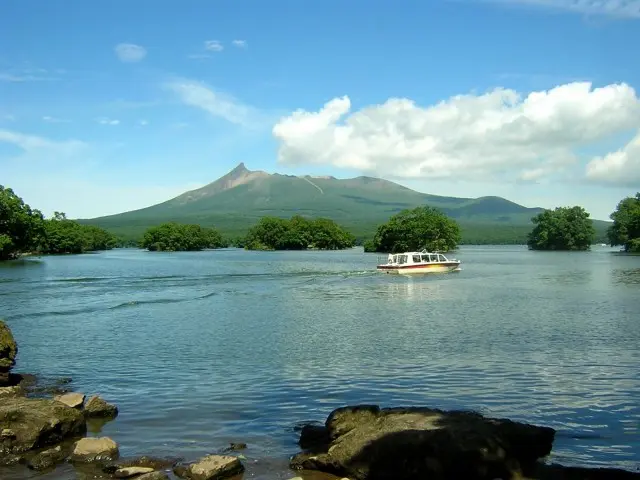
Onuma Quasi-National Park, established in 1958, is a natural park that offers a view of the 1,131-meter-tall active volcano, Komagatake. The view of Komagatake changes depending on which angle you are viewing it from. It's a rare active volcano that is loved by tourists, which can be climbed from June-October.
The two lakes on the west side of the mountain, Onuma and Konuma, also offer a lovely scenery. The entire area is a natural park and the habitat of many animals and plants. It is also an ideal spot for experiencing outdoor sports such as hiking, horseback riding, camping, and fishing.
The Onuma Quasi-National Park can be reached by train (the nearest station is the JR Onuma-Koen Station) or by riding the local Hakodate buses (Onuma-Koen bus stop).
Hotels near Onuma Quasi-National Park
22. Yunokawa Onsen

Yunokawa Onsen is a hot spring town located in Yunokawacho of Hakodate. The resort is very accessible from the airport, being just a five-minute drive away by car! Visitors can enjoy fresh seafood after enjoying a lovely bath in the hot springs of historic ryokans or after admiring the beauty of the ocean from the modern-style hotel.
In the summertime, you can even enjoy watching a show of fireworks while you are relaxing in a hot spring! The Hakodate Tropical Botanical Garden in the corner of the town offers a chance to see Japanese macaques (also known as "snow monkeys") bathing in the onsen hot spring at the Saruyama Onsen.
Hotels near Yunokawa Onsen
23. Hachimanzaka Hill

Hachimanzaka is a slope that extends from the Kanemori Red Brick Warehouse straight to Mt. Hakodate. After dark, the stone pavement is illuminated by streetlights. In the distance, you can see the many ships coming and going from the harbor.
What makes this place so special is the stunning, picture-perfect view over the harbor and the fact that both sides of the street are lined with classical Western-style buildings. This area with an international atmosphere is proof of Hakodate's history as a port city.
Hotels near Hachimanzaka
24. Hakodate Port

The Hakodate Port opened in 1859 and was one of Japan's first international trading ports. This led to the development of Hakodate into a multicultural city taking in many influential factors from overseas, which can be observed with the international architecture of the buildings.
Nowadays, the Hakodate Bay area is sought after by domestic and international visitors for its vibrant atmosphere, with many fine places to dine and spots to hang out. The Hakodate Port can be reached by foot from Hakodate Station after a 15-minute walk.
The annual Hakodate Port Festival held in early August, is an event showcasing some magnificent fireworks that liven up the entire port area. Make sure to plan a summer visit to witness this spectacle!
Hotels near Hakodate Port
25. Kanemori Red Brick Warehouses

The Kanemori Red Brick Warehouses, located right by Hakodate Port, have a long history of about 150 years. These buildings were initially used as storage houses for goods traded at the port.
Nowadays, this area attracts one to two million visitors annually as a shopping complex with an exotic brick exterior. While shopping, you’ll see that the canal passes through part of this district. The buildings and the surface of the water are lit up at night, creating a dazzling view for all visitors to enjoy.
Hotels near Kanemori Red Brick Warehouse
26. Hakodate Morning Market (Asaichi)
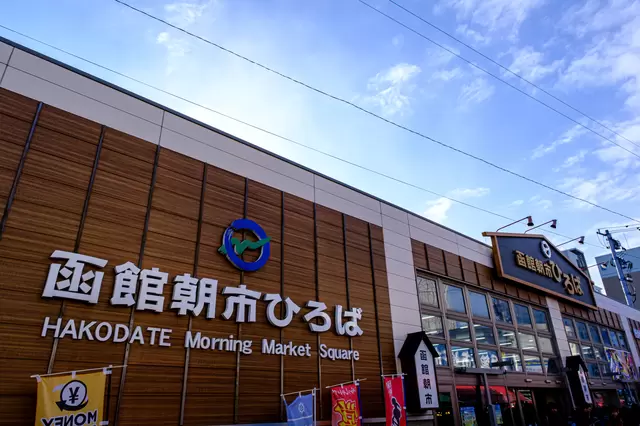
If you're looking for some very fresh seafood like crab, sea urchin, or salmon roe, you should consider the Morning Market (Asaichi) held by Hakodate Station as a spot to visit. The market is bustling every morning with people looking to eat some delicious and reasonably-priced kaisen-don (rice bowl topped with fresh sashimi).
Hotels near Hakodate Morning Market
27. Former British Consulate of Hakodate

The Former British Consulate of Hakodate was first built in 1859, and after going through several fire disasters throughout history, it was restored in 1992. It's currently open to the public and includes a reference room where you can learn about the history of the port of Hakodate opening, which happened upon the arrival of Perry. There is also a cafe here where visitors can enjoy sipping on some genuine British-style afternoon tea.
Hotels near Former British Consulate
28. Seikan Ferry Memorial Ship Mashumaru

The Seikan Ferry Memorial Ship Mashumaru (Hakodate-shi Seikanrenrakusen Kinenkan Mashumaru) is a museum open to the public in a ship that was formerly used as a ferry connecting Hokkaido and Honshu. Inside the ship, you can hold in your hands the equipment that was used back in the day. It's a great spot for families to visit!
Hotels near Hakodate City Seikan Liaison Ship Memorial Hall Mashumaru
Book a hotel room in Hakodate on Booking.com
Book a hotel room in Hakodate on Agoda
29. Niseko: Ski Resorts with Powder Snow

You can't miss out on the winter sports when in Hokkaido! Niseko is famous for its high-quality powder snow which attracts many ski/snowboard lovers annually. There are four major ski resorts in Niseko, each offering excellent slopes for all skill levels: Niseko Tokyu Grand Hirafu, Niseko Annupuri International Ski Resort, Niseko Village Ski Resort, and Niseko Hanazono Resort.
Niseko is extremely popular with international winter sports enthusiasts. With many visitors from outside of Japan visiting Niseko, the dining places and accommodation facilities are able to assist you in English if necessary!
If you want to experience Niseko’s finest powder snow for skiing or snowboarding, plan your visit to be during January or February.
Book a hotel room in Niseko on Booking.com
Book a hotel room in Niseko on Agoda

Asahikawa, Furano, and Biei: 6 Places to Visit
30. Asahiyama Zoo

Asahiyama Zoo is a zoo that attracts many tourists from around Japan being known as one of the largest zoos in the country. Visitors can enjoy the exciting exhibitions demonstrating the various animals' behaviors and habits. It's a fun spot loved by visitors of all ages.
Book a hotel room in Asahikawa on Booking.com
Book a hotel room in Asahikawa on Agoda
31. Farm Tomita: Breathtaking Lavender Fields!

Farm Tomita is open from spring to fall. It's known best for its beautiful lavender and other flower gardens. You can come and enjoy the gardens for free as there is no entrance fee at Farm Tomita! Visitors can also purchase dried flowers, perfume, and other goods made with lavender.
Hotels near Farm Tomita
For details on how to access Farm Tomita and its lavender fields in Furano, check out the article below.
Book a hotel room in Furano on Booking.com
Book a hotel room in Furano on Agoda
32. Sounkyo Onsen

Sounkyo Onsen is located about 70 kilometers away from Asahikawa, in a ravine of the Daisetsuzan Mountain Range. Its hot springs waters are known for having good effects in healing rheumatism, high blood pressure, and diabetes. The townscape is modeled after a Canadian mountain resort and has a Western-style atmosphere.
Address: Hokkaido, Kamikawa, Kamikawa, Sounkyo Onsen
33. Ken and Mary Tree in Biei

The Ken and Mary Tree stands quietly in the town of Biei, Hokkaido. The tree got its name from a television commercial for a car called "Ken and Mary's Skyline." The area surrounding the poplar tree was used as the filming location for the commercial and is now an iconic tree of the city, loved by the locals.
Hotels near Ken and Mary Tree
34. Shirogane Blue Pond

The Shirogane Blue Pond is a spot that garnered a lot of attention after a image of the pond was used as a wallpaper for an Apple product back in 2012. The brilliant blue color of the water is an effect created from the pond containing natural colloidal aluminum hydroxide- allowing our eyes to see a unique and vibrant blue reflection, something you want to see with your own eyes at least once in your lifetime. During the colder months between November and February, the pond will be frozen and lit up at night, giving you a completely different spectacle to enjoy!
If you wish to reach the Shirogane Blue Pond using public transportation, take the Dohoku Bus (No.2, 4, 5, 7, or 8) from JR Biei Station. The bus ride takes approximately 25 minutes.
35. The Biei Hills

The Biei Hills are often called "Patchwork" due to the number of various crops that are planted in this area. The Biei area offers a scenery so pleasant, time will seem to pass by slower than usual. This is a highly recommended spot for photographers looking to take some beautiful landscape photos.
Address: Hokkaido, Kamikawa, Biei
Book a hotel room in Biei on Booking.com
Book a hotel room in Biei on Agoda
The Akan - Mashu Lakes: 2 Amazing Places to Visit
36. Lake Akan, Lake Mashu, and Akan Onsen

Lake Akan is a lake created by volcanic eruptions, with a perimeter of 27 kilometers. Lake Mashu, called "God's Lake" in the Ainu language, has the world's second most transparent water. Both are great spots you want to visit when in the central or eastern regions of Hokkaido.
There are approximately 30 ryokans (traditional inns) and hotels in the hot spring town around Lake Mashu. You can reach the hot spring town from Kushiro Airport by the Akan Bus in about an hour.
37. Kawayu Onsen

About 20 minutes by car from Lake Mashu is Kawayu Onsen. It's an onsen that was born from the water source coming from the river bottom (over 70 degrees Celsius), mixing with the water of the Kumano River.
A large outside bath called Sennin Buro appears in the winter. Here you can relax in the hot water while admiring the star-filled night sky.
Hotels near Kawayu Onsen
Read also
Book a hotel room in Akanko Onsen or Kawayu Onsen on Booking.com
Book a hotel room in Akanko Onsen or Kawayu Onsen on Agoda
Shiretoko, Tokachi, and Obihiro: 4 Great Places to Visit

Shiretoko is a region registered as a UNESCO World Heritage Site. The Tokachi and Obihiro areas boast vast farms and farming villages.
If you're headed to Shiretoko, we recommend you take a bus from Memanbetsu Airport or a JR train from Kushiro Airport. For visiting Tokachi and Obihiro, traveling through the Tokachi Obihiro Airport is convenient.
38. Utoro Onsen

Utoro Onsen in Shiretoko was built back in 1965. Visitors can relax in a hot spring with the mountains of Shiretoko in the backdrop while watching the beautiful sun setting into the Sea of Okhotsk.
39. Shiretoko National Park

Shiretoko National Park covers a vast area of about 60,000 hectares. It's registered as a UNESCO World Heritage Site, and its conservation activity is continued as it is a protected zone. Brown bears and Yezo shika deer inhabit the area. The park is known for its sea, mountains, lakes, and real beauty of nature untouched by humans.
40. Shiretoko Five Lakes (Shiretoko Goko)
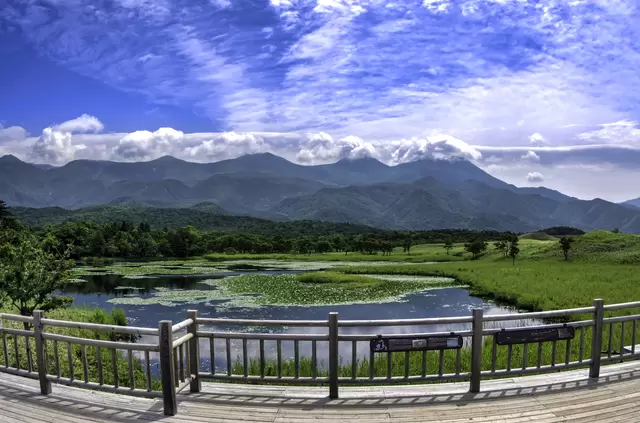
The Shiretoko Five Lakes are an extraordinary phenomenon of nature and are the renowned scenic spots of Shiretoko, the World Heritage Site. There is an elevated wooden path connecting the different points of the lakes, allowing for visitors to freely explore the surroundings of the lakes without any worries of damage to the environment. There is also a grounded path which allows you to get a closer look at the nature which you can take. One note of caution is that while beautiful, the lakes are also a habitat of the native brown bears, so during the months of active bear season (May-July), you can only take the grounded trail by joining a guided tour. During the other months you will be given a safety lecture before being allowed to proceed with your hike along the trail.
Book a hotel room in Shiretoko on Booking.com
Book a hotel room in Shiretoko on Agoda
41. Tokachigawa Onsen
Tokachigawa Onsen in Obihiro is known for its beautiful hot springs and is a popular onsen for people who are looking for a hot spring experience to enrich their skin. This is because the source of Tokachigawa Onsen’s waters are derived from reeds and other plants combined with the ground water, making the natural bath waters full of moisturizing elements and giving the waters qualities to help with lower back pain and skin disease.
Hotels near Tokachigawa Onsen
Book a hotel room in Tokachi on Booking.com
Book a hotel room in Tokachi on Agoda
Book a hotel room in Obihiro on Booking.com
Book a hotel room in Obihiro on Agoda
Hokkaido's Food Scene
Hokkaido is surrounded by the sea, is full of nature, and has plenty of grazing land for farm animals. These are the reasons why there is such a wide variety of delicious food in Hokkaido. Don’t miss out on any of Hokkaido's seafood, vegetables, or dairy products when you visit!
As for local cuisine, Hokkaido residents love Jingisukan, which is grilled mutton and vegetables. It's also popular to include butter, sake lees, and potatoes in Ishikarinabe, a stew made with salmon, vegetables, and miso.
Another Hokkaido favorite is miso ramen known for its unique take on using miso paste for the broth and the famous Sapporo ramen noodles which are wavy with a medium thickness.
Read also
Hokkaido's Sushi

The entirety of Hokkaido is surrounded by waters, allowing it to offer the freshest seafood straight from the harbor. For everyone looking to eat quality sushi, we especially recommend Nagoyakatei (Japanese), a popular conveyor belt sushi restaurant, where you can enjoy uni (sea urchin), salmon roe, crab, and other fresh Hokkaido seafood for a reasonable price! You’ll find that the slices of fish are largely portioned as well.
Address: Sapporo, Kiyota, Kitano 5-5-20
Seafood in Hokkaido

Besides sushi, you can also enjoy kaisendon (sashimi bowl) piled with generous amounts of fish. For ikura salmon roe lovers, we recommend eating at Kuidokoro Shakebanya in Kushiro. Satisfy your ikura cravings by trying their ikuradon (ikura bowl) at their cozy shop and eat-in restaurant.
Address: Hokkaido, Kushiro, Hamacho 4-11
Hokkaido's Famous Ramen

The most famous ramen in Hokkaido is miso ramen. One of the best-known ramen joints is Sumire, which offers ramen with a rich, miso based soup and tender char siu barbecued pork as toppings. You'll immediately crave more once you've tasted it!
Address: Hokkaido, Sapporo, Toyohira, Nakanoshima 2 Jo 4 7-28
Read also
Hokkaido Events and Festivals

Many events are held in Hokkaido throughout the seasons, especially in the winter, when there are many snow-related attractions. Held annually in early February is the famous Sapporo Snow Festival, where a variety of amazing and creative snow and ice sculptures are displayed! After exploring the festival, you can enjoy all the warm Hokkaido delicacies that are offered. It's said that the Sapporo area becomes so crowded during this time that you'll forget entirely that it’s cold!
Hotels near Odori Park
Cherry Blossoms and Fall Foliage in Hokkaido: Seasonal Features

Although the summer season in Hokkaido is somewhat cooler than in Honshu (mainland Japan), layering clothes shouldn't be necessary if you're in the Hakodate or Shiretoko area. You'll be able to visit comfortably in short sleeves and shorts. However, the temperature in the Furano and Asahikawa areas differs greatly during the day. This is especially true if you're in a place of high elevation, so please bring warm clothes.
In the winter however, no matter where in Hokkaido you are, you will experience very low temperatures. You should be prepared with clothes for cold weather to enjoy your trip.
Transportation in Hokkaido
To travel from Tokyo to Hokkaido, we recommend booking a flight. It is possible to travel to Hokkaido by bullet train or car, but expect it to be a much longer trip. For details, please refer to the article below:
Check the flights from Tokyo to the New Chitose Airport in Hokkaido on skyticket
If you travel by train, use the JR PASS and Hokkaido Rail Pass to save on travel expenses.
Using a rental car is very convenient for traveling around Hokkaido to destinations not easily accessible by train.
MATCHA's readers can use a 10% discount voucher for a car rental from Nippon Rent-a-Car, one of the largest rental car services in Japan.

Please be careful, however, when driving in Hokkaido during the winter. This region sees severe snowfall yearly, and there might be frost on the roads. Because of the snow, there are times when the roads might not be visible.
FAQ
What is nice in Hokkaido?
Hokkaido, Japan's northernmost island, beckons visitors with its diverse attractions and natural beauty. From the vibrant city of Sapporo and its historic landmarks to the breathtaking landscapes of Furano's flower fields, Shiretoko Peninsula, Lake Toya, and Daisetsuzan National Park, Hokkaido offers stunning vistas year-round. Outdoor enthusiasts can partake in skiing, snowboarding in Niseko, or summer activities like hiking and hot-air ballooning. The island's hot springs like Jozankei Onsen and Noboribetsu Onsen provide relaxation, complemented by Hokkaido's renowned cuisine featuring fresh seafood, dairy products, and local specialties. Hokkaido's festivals, including the Sapporo Snow Festival and the Yosakoi Soran Festival, showcase its vibrant culture, while wildlife enthusiasts can encounter bears, cranes, and other rare animals in their natural habitats. Hokkaido's charm lies in its diverse offerings that cater to a wide range of interests, making it a captivating destination for exploration and discovery.
How many days in Hokkaido is enough?
The ideal duration for a trip to Hokkaido varies based on the traveler's interests and planned activities. For a focused exploration of Sapporo and its surroundings, 2-3 days may suffice, while outdoor enthusiasts seeking activities like skiing or hiking should consider dedicating 5-7 days or more. Visitors looking to relax in onsen retreats may find 2-3 days ample for unwinding in hot springs. Multicity explorations across regions like Furano, Biei, Otaru, and Asahikawa typically require around 7-10 days for a comprehensive experience. Extended road trips covering Hokkaido's diverse landscapes and attractions may demand 10 days or more. Overall, a well-rounded trip to Hokkaido generally spans 5 days to 2 weeks or longer, with a clear itinerary and flexibility ensuring a fulfilling exploration of the island's beauty and culture.
What is Hokkaido famous for?
Hokkaido, Japan's northern island, is renowned for its captivating blend of natural beauty, cultural richness, and culinary delights. The region's picturesque landscapes, from the flower fields of Furano to the volcanic wonders of Lake Toya, are a haven for outdoor enthusiasts, while winter sports in Niseko and Rusutsu attract skiers and snowboarders worldwide. Hokkaido's hot springs provide relaxation, seafood delicacies like uni and king crab tantalize taste buds, and festivals such as the Sapporo Snow Festival offer colorful cultural experiences. The island's wildlife, historical landmarks, and indigenous Ainu heritage further enrich Hokkaido's diverse appeal, ensuring that visitors can immerse themselves in a multifaceted exploration of natural wonders, traditions, and flavors during their Hokkaido sojourn.
What is the most beautiful town in Hokkaido?
Hokkaido boasts several visually captivating towns, each with its own unique charm and beauty. Among these, Furano stands out for its colorful flower fields, including the famous lavender fields that bloom in summer, while Biei is renowned for its patchwork fields, rolling hills, and scenic beauty that transforms with the seasons. Otaru charms visitors with its historic canal area, preserved buildings, and nostalgic ambiance, particularly during the winter festival season. Shakotan captivates with its crystal-clear waters, dramatic coastline, and picturesque cliffs overlooking the Sea of Japan, while Shiretoko entices with its UNESCO World Heritage wilderness, mountainous landscapes, and diverse wildlife. These towns exemplify Hokkaido's diverse and breathtaking beauty, offering travelers stunning vistas and unforgettable experiences immersed in nature and culture.
What is the best month to visit Hokkaido?
The best time to visit Hokkaido varies depending on your interests and desired experiences on the island. Spring (April - May) offers cherry blossom viewing and mild weather ideal for outdoor activities. Summer (June - August) is perfect for outdoor adventures like hiking and enjoying the vibrant lavender fields of Furano. Autumn (September - November) showcases beautiful fall foliage, hot springs, and seasonal foods. Winter (December - February) is a popular time for winter sports, with world-class skiing and the renowned Sapporo Snow Festival. March is an off-season period with fewer crowds and cheaper accommodations; it's a transitional time ideal for those seeking a quieter visit and possibly catching the end of winter activities. Each season in Hokkaido presents unique attractions, catering to various interests and making the island a year-round destination worth exploring.
Is Hokkaido better than Tokyo?
Comparing Hokkaido and Tokyo reveals contrasting experiences tailored to different preferences and interests. Hokkaido boasts stunning natural beauty, outdoor activities, and a serene ambiance, known for its seasonal changes, fresh seafood, and unique cultural heritage. In contrast, Tokyo embodies a bustling metropolis with a vibrant urban atmosphere, diverse culinary scene, historical landmarks, and modern attractions. Hokkaido offers tranquil escapes and an outdoor paradise showcasing picturesque landscapes, while Tokyo captivates with its dynamic city life, cultural richness, and contemporary offerings. Choosing between Hokkaido and Tokyo depends on whether one seeks nature's tranquility, outdoor adventures, and culinary delights (Hokkaido) or the energy of a cosmopolitan hub with a blend of tradition and modernity, diverse experiences, and urban excitement (Tokyo). Each destination provides a distinct and enriching experience that showcases different facets of Japan's allure.
Book Hotel Rooms in Hokkaido and Wi-Fi
You can find convenient accommodation in Hokkaido by using Booking.com or Agoda.
You might also need a Wi-Fi connection since the places that offer free internet connections in Japan are still quite limited. Renting pocket Wi-Fi is very convenient for travelers. Use the 20% discount voucher below to rent from Ninja-WiFi, one of Japan's most popular portable internet services.

Enjoy your trip to Hokkaido!
All pictures from Pixta
*This is an updated version for 2023 of an article originally published in 2016.
This is the official account of MATCHA's editorial department. Our articles feature useful travel information for visitors to Japan, from how-to guides to recommended places to visit.




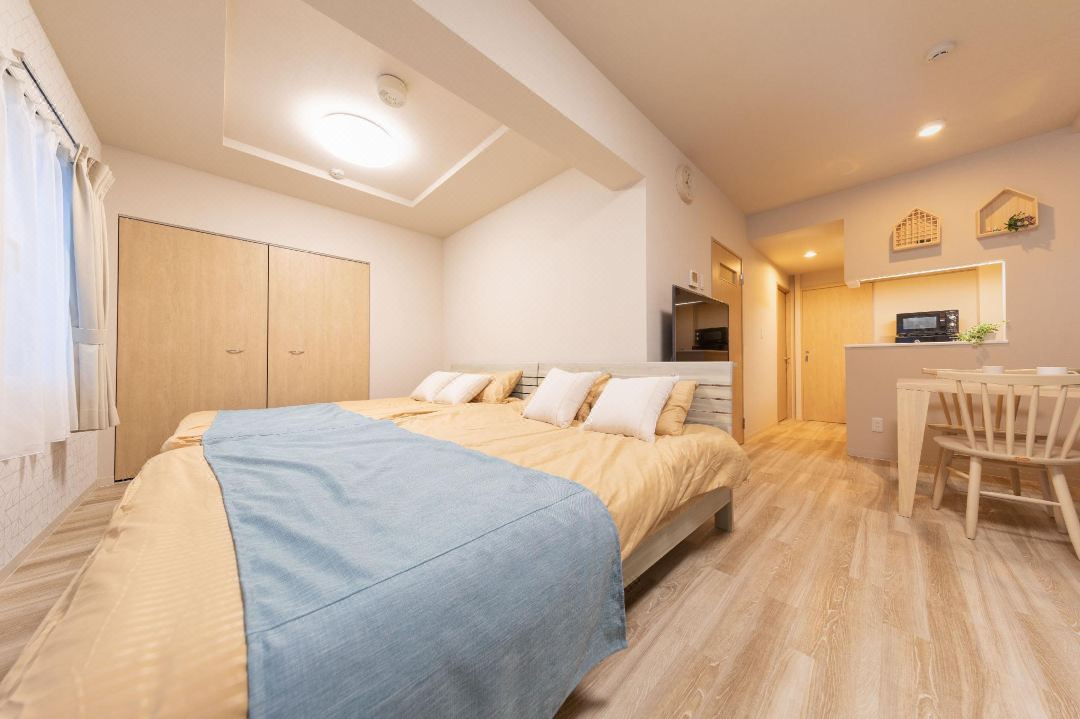










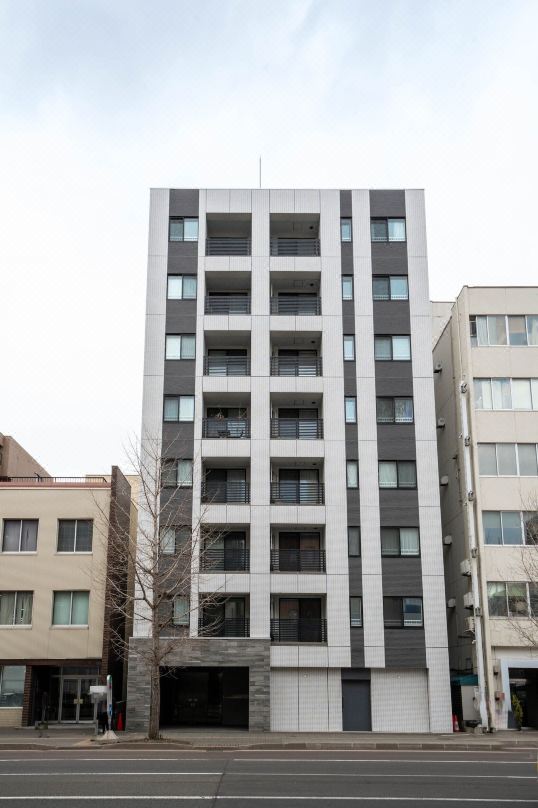








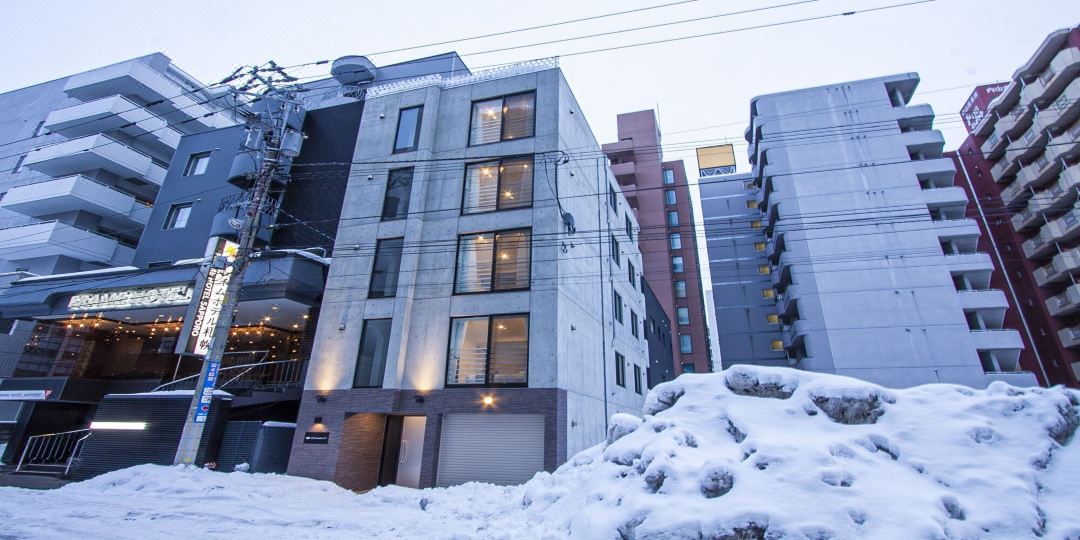


























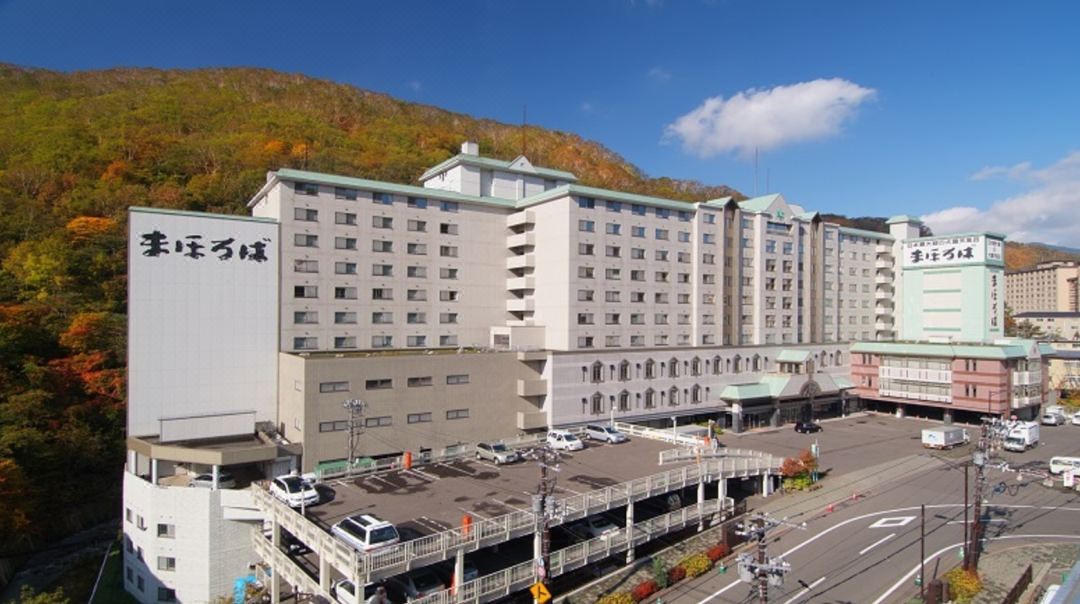
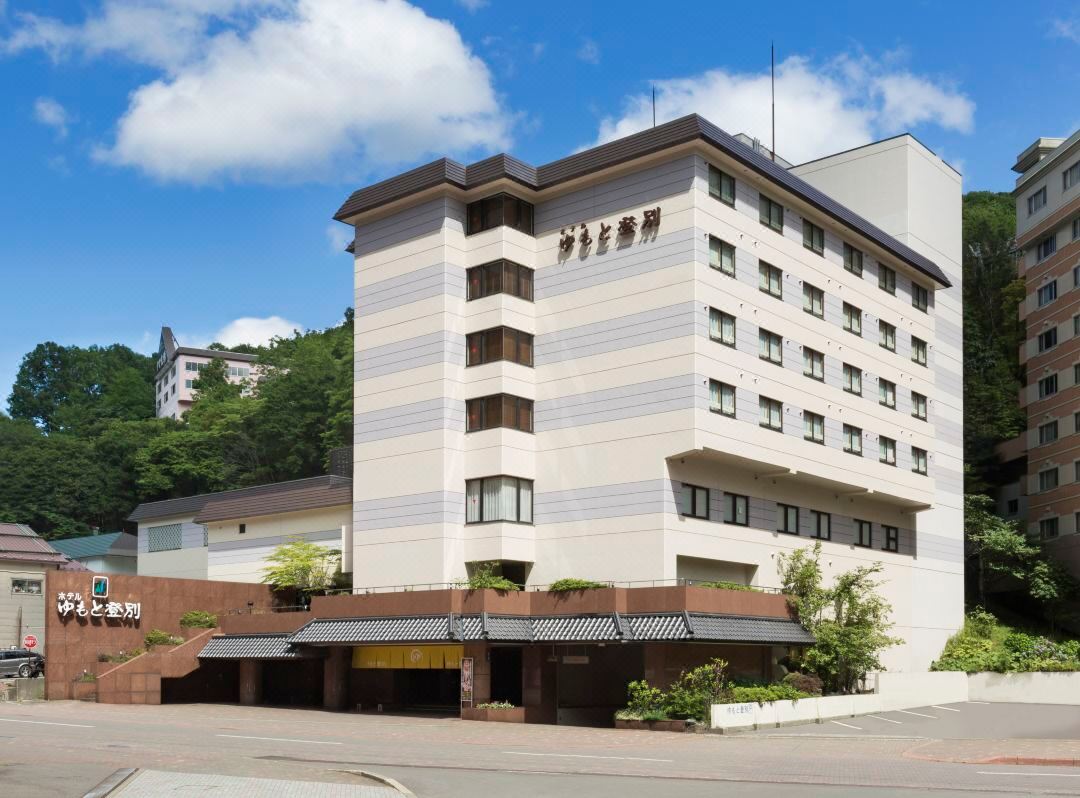


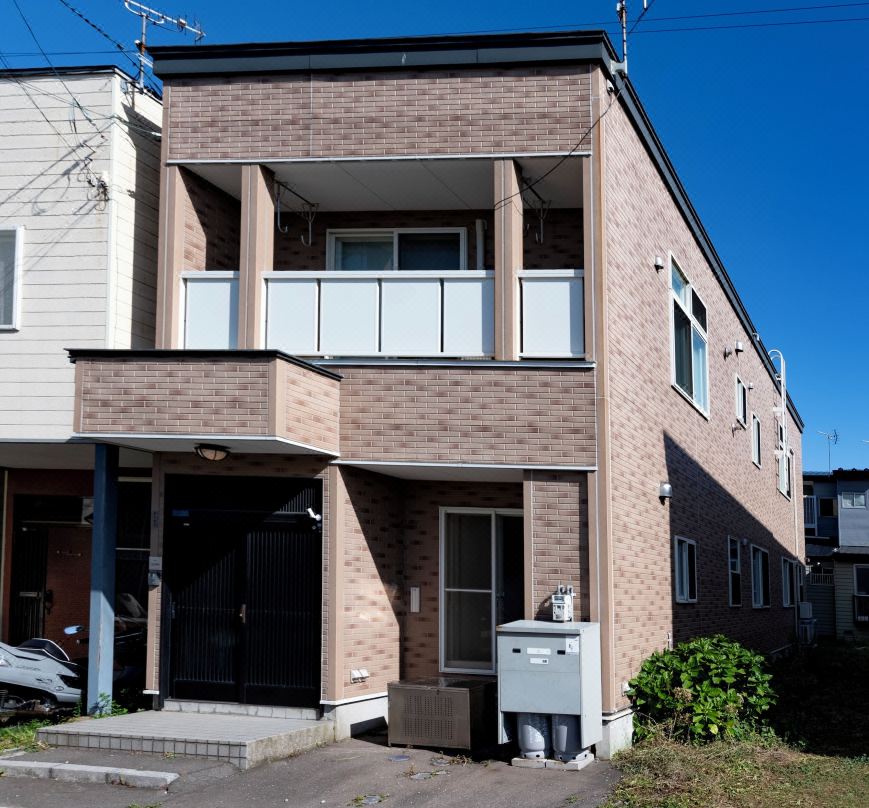























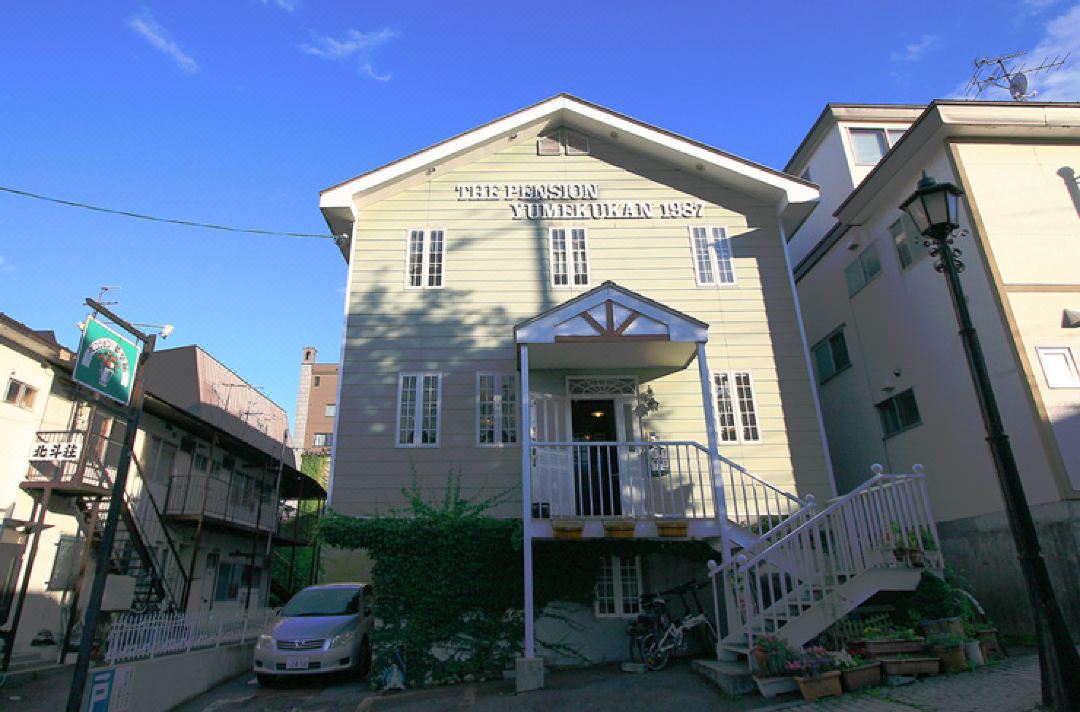





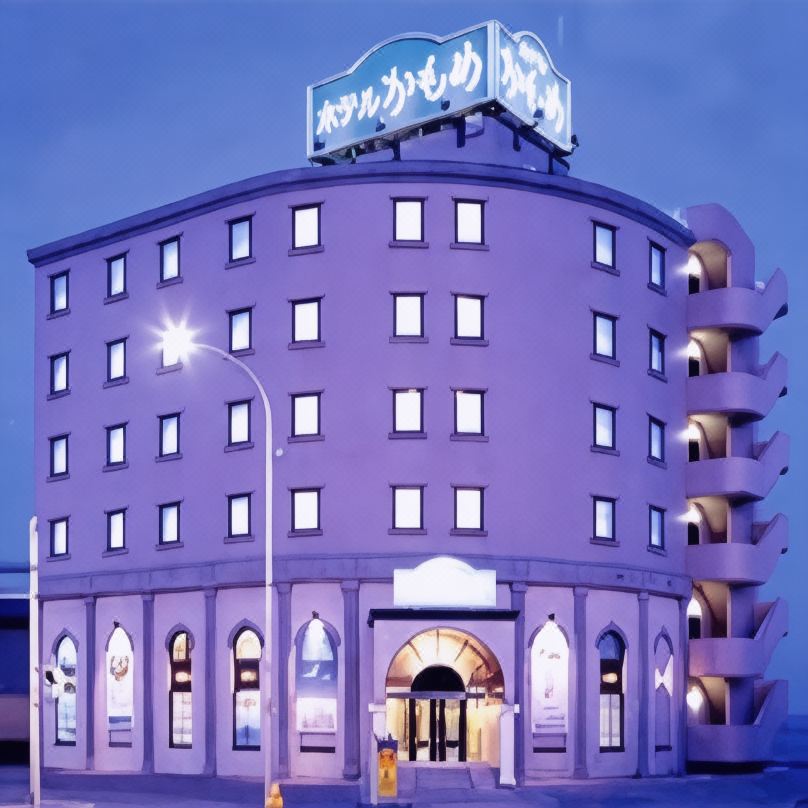







































































![[2026] Top 5 Strawberry Picking Spots in Tokushima, Naruto| Farms and Access Guide for January to May](https://resources.matcha-jp.com/resize/720x2000/2025/03/06-227165.webp)

